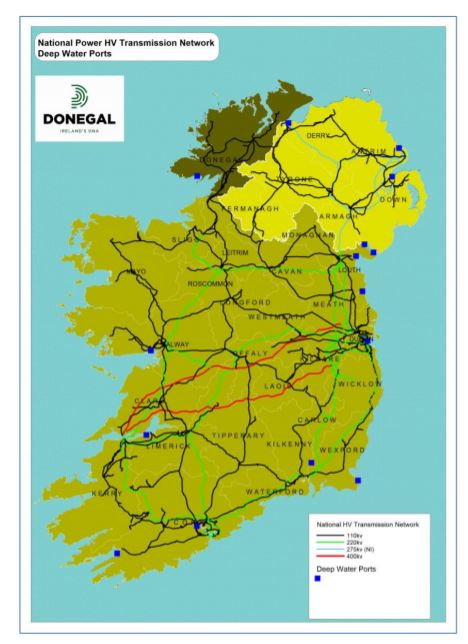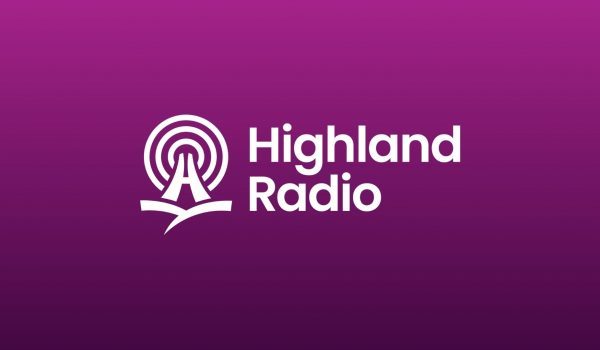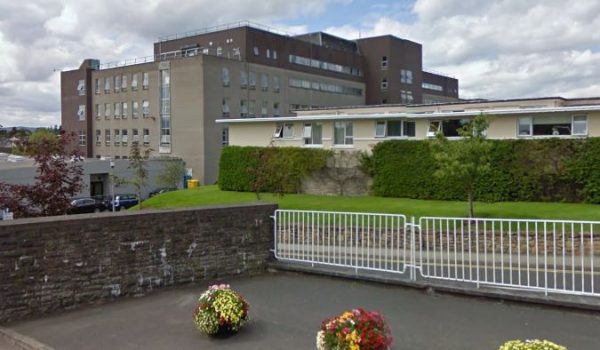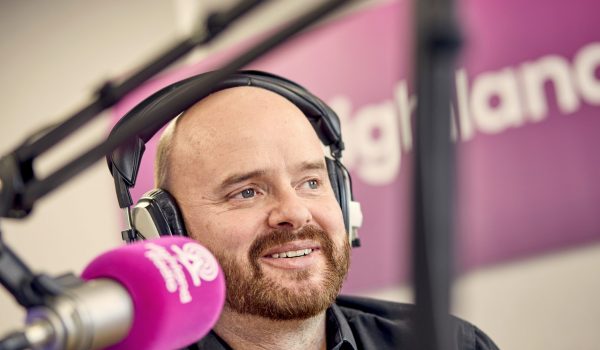Donegal County Council has made a submission to Eirgrid’s consultation on Ireland’s Future Electricity System.
In its submission, Donegal County Council says the current grid infrastructure in Donegal is a major inhibiting factor and is causing considerable curtailment and constraints.
The document states there is a need to upgrade the existing 110kv lines to a 220kv line with it
running from Sligo to Cathleen Falls to Letterkenny with a continuation across the border at Derry giving
interconnection at Coolkeeragh power station.
The enhanced 220kv grid infrastructure, the council argues, will help meet future electricity demands using clean renewable energy, while allowing Donegal to become a lead in renewable energy generation and aiding Ireland’s quest to meet its climate action goals.
The submission concludes that the need to achieve balanced regional development alongside meeting the future energy demands both locally and nationally have been considered as part of the preparation process for this submission.
It is the council’s view, the document continues, that a comprehensive evaluation of how to achieve that can only be undertaken once significant investment in grid infrastructure to address current deficiencies is provided for.
**************************
Submission text –
1.0 Introduction
Donegal County Council has been invited to prepare a submission to Eirgrid’s consultation on Ireland’s
Future Electricity System. This submission will set out in greater detail what ‘Shaping Our Electricity
Future’ means for Donegal in terms of meeting social, economic and environmental policy goals.
Donegal County Council is committed to supporting and proactively facilitating the transitioning to a low
carbon climate resilient society and therefore supports EirGrid’s strategy to reach 70% of Ireland’s
electricity from renewable sources by 2030. Donegal’s ambition is focused on the extended view of
100% energy from renewable sources and achieving net zero emissions by 2050.
Eirgrid’s consultation on Ireland’s Future Electricity System presents Donegal with a unique opportunity
to enable the County to become a lead in global renewable energy.
In the energy sector, Donegal has a pivotal role in the transition to a low carbon economy from
renewable sources of energy as part of Ireland’s climate change strategy and can take significant
advantage of the economic development opportunities arising from the development of the renewable
energy sector as a key driver for the growth and prosperity and positioning.
The submission has taken account of the feedback received as part of the consultation and engagement
process with key stakeholders in both private and public sectors.
2.0 Policy Context
The submission is aligned within the broader policy context from international, EU, national, regional
and local levels and has been shaped by the challenges and opportunities arising.
The aspiration of COP26, the 26th UN’s Climate Change Conference to be held in November 2021, is to
introduce a carbon natural world by 2050 in avoiding climate catastrophe. The Global Wind Energy
Council’s annual report from March 2021, forecasts that globally 5.22TW1
or 180GW per year of
combined onshore and offshore wind needs to be installed to reach the carbon neutral target by 2050.
Furthermore that report estimates that Europe needs to provide 450GW of offshore wind by 2050 to
keep temperature rise below 1.5 degrees, with Ireland’s Atlantic zone contributing 85GW. Wind power
is therefore a cornerstone of achieving net zero and powering a green economy as a cost competitive,
resilient power source with the most decarbonisation potential for megawatt (MW)
The European Green Deal sets of a range of policy initiatives to make Europe carbon neutral by 2050 and
contains a transition fund to assist member’s states in implementing green policies and infrastructure.
The Green Deal has an emphasis on the central role of the blue economy as a critical enabler to mitigate
against and adapt to climate change, by contributing to the clean energy transition by tapping into the
growing potential of offshore renewable energy.
Ireland’s national ambition to have a low carbon economy was first put forward in Project Ireland 2040.
Project Ireland 2040 encompasses the National Planning Framework (NPF) and the National
1
1Gigawatt = 1000 Megawatt, 1 Terrawatt = 1000 Gigawatt
Development Plan (NDP) and presents ten National Strategic Outcomes. It acknowledges that
fundamental societal transformation, sustained policy and behavioral change are vital in reducing
greenhouse gas emissions and to harness the significant opportunities for sustainable jobs, while
inaction would undermine our green reputation and the ability to attract foreign direct investment. Key
pillars of investment are in energy efficiency, renewable energy, commercial and private sector
investments and transport.
The Climate Action Plan (2019) lays the foundation for achieving net zero carbon emissions which will
involve transformational change on our society as a whole to create a resilient, vibrant and sustainable
country. The Plan first set a new commitment of 70% of electricity originating from renewable sources
by 2030 which will involve significant infrastructure, reinforcement of the grid with greater
interconnection and the capacity to integrate new technology. Harnessing renewable energy from
onshore, offshore and solar capacity, micro-generation, EirGrid’s programme and supporting ocean
energy and research are measures to deliver the Plan’s decarbonisation ambition.
The Programme for Government – Our Shared Future encourages research in scientific and technological
innovation in meeting our climate change targets to include, green hydrogen, wave technology, the
bioeconomy and floating offshore to take advantage of the Atlantic seaboards.
Ireland’s marine territory extends well beyond the coastline at an area of 10 times the country’s land
mass. The new National Marine Planning Framework is a long term statutory spatial plan which
addresses how best to manage the extensive maritime area into the future. This plan will guide
proposals for offshore renewable projects, initially focussed in the South and South East of the country.
At a regional level, the Northern and Westerns Regional Spatial and Economic Strategy 2020-2032 (RSES)
reflects that a transition to a low carbon economy as an integral part of Ireland’s climate change
strategy to meet EU targets. On the demand side, power generation, transport and heat increasingly
have to be produced from sustainably produced renewable energies. The North West region is
favourably disposed with rich renewable wind, solar and wave energy along and throughout the region.
The RSES states that the development of the grid in the North West is based on the significant potential
of renewable generation in Donegal and in the western Northern Irish hinterland. The Regional Policy
Objectives specifically supports the necessary strengthening, reinforcement and the integration of the
transmission network to support the energy needs of future population and to facilitate economic
growth and expansion (RPO 8.1 – 8.4).
The North-West Regional Energy Strategy 2020-2045 is soon to be launched and is being developed by
Donegal County Council and Derry City and Strabane District Council. This cross border strategy will
provide a roadmap to a sustainable future for individuals, communities, businesses and the local
environment in the region whilst maximising opportunities for economic growth. The Strategy will be
aligned with binding targets by EU and central governments.
The County Donegal Development Plan 2018-2024 (CDP) is closely aligned with the ambitions of the NPF
and promotes an increase in energy supply to accommodate and help attract future economic
investment in the county. It is recognised that energy resilience into the future will be influenced by
continued investment in the electricity networks and infrastructure. The Plan strongly supports the
strategy of EirGrid for the North-West becoming a net exporter of power to the rest of the island. To
achieve this additional investment of approximately €750m is required to upgrade 700km of the existing
transmission network including 110 kV reinforcements between Killybegs and Letterkenny and further
development of cross border grid connections. Furthermore the potential of micro-generation to sell
surplus energy back to the grid is supported.
3.0 Renewable Ambition to 2050
In working with stakeholders and key partners, ‘Shaping our Electricity Future’ aims to transform the
power system in Ireland so as to facilitate an orderly transition to ensure that at least 70% of electricity
supply from renewable sources by 2030.
While Donegal County Council acknowledges EirGrid’s strategy to focus on this ambition to 2030, we
propose that a longer term view is also required if the opportunities to create a sustainable electricity
system that will meet the rapidly growing needs and demands of communities and industry right across
the island is to be fully realised. While the primary focus for offshore wind energy generation is
currently centred on the eastern and southern coasts of the country, the potential for offshore wind
generation of the west and north west coast is becoming increasingly viable with the rapid pace of
advancements in technology, with industry experts advising that what may have been a 15 year timeline
in 2019 is now more like an 8 year timeline.
The north west coast of Ireland is reputed as having one of the best wind resources in Europe (if not the
world) with an average of 7mtrs per second/s onshore and 11mtrs per second/s offshore. This has led to
the significant harnessing of onshore wind energy in Donegal despite the limited availability of electricity
grid infrastructure.
In relation to the substantial potential in offshore energy generation, it is our understanding that at
least three major international utilities are looking at development opportunities in the North West
Quadrant off the Donegal coast. However, the current grid connection will not be sufficient and will
need to be upgraded as a minimum to 220kva line.
The enhancement of the grid infrastructure is essential if we are to positively maximise the renewable
energy generation potential that the county and the North West Region has.
Making the necessary investments now will allow EirGrid to be in a position to avail of the huge
opportunities in terms of clean renewable energy generation and the potential of the North West region
in contributing significantly to achieving the national carbon neutral ambitions of 2050.
In terms of what ‘Shaping Our Electricity Future’ means for Donegal to meet social, economic and
environmental policy goals, it is important to consider the emerging trends in the energy sector, the
Renewable Energy opportunity presented, the challenges of the current grid infrastructure and the
recommendation offered to maximise renewable energy generation.
4.0 Emerging Trends
Rising demand for electricity
In Ireland our long term future energy requirements are forecast to increase significantly. The country is
in a period of economic growth with the net effect of increased electricity consumption and demand.
ESRI project our population to increase by around 1 million to, almost 5.7 million people, by 2040 and an
additional half a million new homes by 2040, will place considerable more demand on energy resources.
The recent global pandemic has altered working patterns significantly from offices in urban centers to
home working in rural communities, which has impacted greatly on electricity requirements.
Our energy system is currently dominated by imported fossil fuels (87% of all energy used in Ireland
particularly oil), while renewable, comprising of a mix of hyrdo, wind and biomass, represented just
11%. The Irish Wind Energy Association estimates that demand for electricity for electric cars and heat
pumps will treble by 2050, requiring electrifying huge proportions of the heating and transport sectors
to meet future demand. The reduction in fossil fuel use is imperative to reach net zero carbon emissions
by 2050 and will involve a clear shift to clean energy solutions.
The growth in digital technologies will place more demand on the energy system in the coming decades,
while making it more connected, reliable and sustainable. The all-island Generation Capacity Statement
by EirGrid and SONI in Northern Ireland, forecasts the total electricity demand growth to 2030 will be
largely driven by new large users, many of which are data centres, which could account for
approximately 27% of all electricity demand in Ireland by 2028.
Decarbonisation of electricity
Climate change commitments and to meet EU targets mean that power generation, transport and heat
will increasingly have to be produced from sustainably produced electricity. Electricity will play an
important part in delivering a sustainable future and decarbonising our energy system.
Decarbonisation is an objective of the NPF with the stated target that Ireland becomes a Low Carbon
Economy by 2050 and The Climate Action Plan 2019 reflects that policy framework and also the actions
set out in the National Mitigation Plan and Project Ireland 2040.
Our Climate Neutral Future Zero by 50 report by Wind Energy Ireland and MaREI highlights the targets to
transition to a climate resilient economy to 2050 with primary energy demand from renewable energy
shifting from 12% to 100%. By 2050 fossil fuel use will be phased out, with wind set to become the
predominant source of energy followed by solar.
Exploiting renewable energy resources
For our transition to a climate resilient economy, power generation, transport and heat increasingly
have to be produced from sustainably produced renewable energies. Supplying Ireland’s future
electricity demand will undoubtedly require a significant increase in the amount of renewable energy
produced from 4.5GW to an estimated 25GW by 2050.
Ireland has an abundance of rich renewable energy resources through wind, solar and wave. By scaling
up technologies across onshore wind, fixed offshore wind, floating offshore wind and solar, future
demand will be met if not exceeded and will reduce the dependency of imported fuels from 70% to 5%
by 2050.
5.0 Donegal – Renewable Energy Opportunity
County Donegal is ideally located on the North-West Atlantic seaboard to take advantage of its sources
of renewable energies – wind (on and off shore), solar and wave energy and the associated significant
employment and economic opportunities arising as a result. Donegal has a superb renewable energy
resource with a natural strategic advantage for onshore and offshore wind energy generation.
5.1 Existing and Potential Opportunities
The county already generates significant onshore wind energy output of 449.3 MW, currently the third
greatest share of installed capacity in Ireland. Having an abundant wind resource has lent itself to
onshore wind energy being harnessed significantly in Donegal and a portfolio of 43 projects2
, despite the
limited available electricity grid infrastructure.
Offshore wind farms have the potential to deliver the single biggest investment and job opportunities to
coastal communities in Donegal. In terms of quantifying job numbers, a recent Danish study calculated
that every 1 GW of offshore renewable energy produced will support up to 14,600 jobs in the Danish
economy. At the Arklow Bank Wind Park an export capacity of 520MW is projected, sufficient to power
almost 450,000 homes annually, employment for 300-500 at construction phase, 80 directly employed
at operational phase with a further 140 indirect over project lifetime.
5.2 Killybegs
Killybegs is one of three deep water ports on the island of Ireland that offers considerable potential as a
strategic location for a supply and maintenance base for Irelands growing renewable energy sector. In
harnessing the expertise of the world class marine engineering sector and associated businesses already
located in the port, Killybegs is ideally positioned and particularly suited to offer a one stop shop service
centre for the offshore energy industry.
2
Source – Wind Energy Ireland and based on Generation Reference Numbers
With the growing interest in the potential of Hydrogen, Killybegs has also been identified as an ideal
location to provide the land based infrastructure for a hydrogen plant allowing for the export of
hydrogen to market.
5.3 Private Sector Interest
Floating offshore wind developments are suitable for deep waters such as those off the North West
coast, leading to significant investment opportunities by 2030. Private sector interest is already being
explored at this point in time by international utilities in the North West Quadrant off the Donegal coast.
5.4 Research and Innovation
Donegal can play a lead role in research and innovation in supporting the industry for offshore (bottom
fixed and floating) and ocean energy (waves and tidal energy) to commercial maturity in the Atlantic
Ocean.
Letterkenny Institute of Technology is a key partner of the well established crossborder Bryden
Renewable Energy Centre, which is a Doctoral Research Centre for emerging renewable energy
technologies, along with other research partners – Queen’s University Belfast, Ulster University and
AgriFood & Biosciences Institute.
In addition, Letterkenny Institute of Technology is currently developing plans for a new 840m2 Ocean
Innovation Centre on their campus in Killybegs and this centre will support the growth of the blue
economy in Donegal. The centre will incorporate the existing Wind Energy Centre, which has been to the
fore in developing a number of key renewable energy projects that have positioned Donegal and the
North West as a key player in the both the onshore and offshore renewable energy sector.
Plans for the new Ocean Innovation Centre also include a dedicated hydrogen laboratory that will focus
on maximizing the energy potential of the Atlantic Ocean. With water depths of over 100m, the main
energy capture technology will be floating wind and wave technologies. With many sites also over 20km
from shore multiple floating substations would be required and therefore energy to hydrogen is going to
be a key technology. By developing the hydrogen laboratory in the North West pre-2030 it will allow for
development of expertise in the locality for the decarbonisation of the area. This facility will be a world
leading H2 location sited adjacent to a huge resource of renewable energy.
5.5 Crossborder opportunities
Energy is a fundamental utility for Donegal and the North West City Region as recognised in the NPF and
the RSES. The All Island energy market is maintained with provision for the two different electricity
systems. A new interconnector as identified by the EU as a project of common interest, would support
future development opportunities for Donegal on a crossborder basis, in becoming a net exporter of
power to the rest of the island
The North West Regional Energy Strategy aims to accelerate the Region becoming carbon-neutral by
2045. The North West Region Energy Agency is the vehicle for the delivery of the strategy and sets out a
roadmap to deliver the infrastructure necessary and presents a real opportunity for to play a central role
in supporting the Irish Government’s Climate Action Agenda.
5.6 Ongoing and planned initiatives
The development of a 5Mv PV park in Gaoth Dobhair Business Park is currently being explored by
Údaras na Gaeltachta along with local community. With the gird capacity and connection challenges
resolved, the intention is to generate energy by 2024.
Micro-generation (solar, micro-wind and hydro) has the potential to incentivise local innovation in
delivering solutions for peak surplus energy being re-routed back to the grid and in achieving higher
energy efficiencies.
6.0 Challenges and Recommendations
Donegal is poised to take significant advantage of the economic development opportunities arising from
renewable energy. For Donegal to reach the next stage of development and to realise its ambition, a
number of challenges are presented with specific recommendations outlined.
6.1 Curtailment and constraint
In Donegal, the infrastructure is limited to 110kv with the transmission avenue from the south of the
County at Cathleen Falls in Ballyshannon – see Map 1 below.
Donegal has the highest levels of constraint and curtailment in Ireland already. This limits the ability of
power transported back to the grid, with wind energy generated not being able to be transported due to
a lack of capacity.
In this regard, the following grid developments and enhancements are required:
a. Development of the grid to 220kv
The current grid infrastructure in Donegal is a major inhibiting factor and is causing considerable
curtailment and constraints. There is a need to upgrade the existing 110kv lines to a 220kv line with it
running from Sligo to Cathleen Falls to Letterkenny with a continuation across the border at Derry giving
interconnection at Coolkeeragh power station.
The enhanced 220kv grid infrastructure will help meet future electricity demands using clean renewable
energy and while allowing Donegal to become a lead in renewable energy generation and aiding
Ireland’s quest to meet its climate action goals.
b. Crossborder Connection between Donegal & Northern Ireland
Northern Ireland’s dependence on energy imports from Scotland and Ireland, presents a significant
opportunity for Donegal as a net exporter of renewable energy. Donegal County Council supports the
action point in the Climate Action Plan (2019) for a North South Interconnector for All Island
infrastructure to allow for more energy flows and reinforcement for Donegal.
An onward connection to Coolkeeragh Power Station with a crossborder interconnector is required to
enable this.
c. Offshore Connection
Realising the potential of the off shore renewable energy sector in Donegal is critically dependent on the
development of enabling infrastructure to bring the energy ashore and to connect to major sources of
energy demand. While it is envisaged that Hydrogen will play a significant role in exporting power from
off shore wind from this region, the regions potential as a substantial generator of renewable energy
will not be achieved based on this alone. It is essential that there is an opportunity to transport the
energy generated to the grid via a 220kva line at minimum.
As referred to above, Killybegs is one of only three deep water ports in Ireland with the capacity to
service the offshore renewable energy industry and by upgrading the existing spur of the grid in the port
to 220kv would enable the port to compete internationally and target foreign direct investment for
offshore energy projects. There is also an opportunity to consider bringing energy onshore at Cathleen
Falls in Ballyshannon.
6.2 Economic Development & Job Creation
Energy is a critical enabler for economic growth and inward investment in Donegal to attract high
technology industries that depend on a reliable, high-quality electricity supply. This lack of essential
energy infrastructure has contributed to the legacy of poor economic performance and competitiveness
in the county. Poor grid infrastructure has been an impediment to job creation and economic
development in Donegal in particular contributing to the low levels of FDI to the county. Investment in
infrastructure is essential if we are to achieve targets of balanced regional development set out in NDP
and NPF. Donegal is competing for investment with other western seaboard counties which already
have 220 & 400kv high voltage lines. This has been cited by economic development agencies including
the IDA, as a major impediment in attracting inward investment to the county with major investments
going to locations with more favourable conditions and better power infrastructure.
6.3 Research and Innovation
As referred to above, through partnerships with both public and private stakeholders a considerable
level of expertise has been developed in this sector in Donegal and the North West region with plans
afoot to continue to build on this with aspirations to become a market leader in this area. Considerable
strides are being made in the development of cutting edge technologies necessary to realise the
potential of renewable energy in a commercially feasible way, while contributing substantially to
national climate action targets. For example considerable investment is being made in exploring the
potential of hydrogen as an alternative energy pathway including route to market opportunities
necessary to develop a green energy hydrogen economy.
6.4 Windfarm Grid Connections
The current approach to clean electricity generation appears to favour a Developer-Led approach which
involves windfarm developers selecting a generation site and then being responsible for the grid
connection works needed to link the site to a grid connection point specified by EirGrid. Current
guidance requires the grid connection cabling to be installed underground and where possible to be
placed in public roads. This approach presents problems for the roads authorities (maintenance,
realignment, etc) and also limits the number of windfarms that can connect at any given location to the
space available in the road. It further restricts space available in the road for other essential services
such as water/ wastewater infrastructure, telecommunications cabling, road drainage, etc.
It is suggested that EirGrid should liaise with Local Authorities, the Department of Transport and
Transport Infrastructure Ireland, to develop an approach to proactively service clean energy generation
sites without the need for long lengths of grid connection cabling being installed in public roads.
7.0 Conclusions
Donegal County Council is committed to supporting and proactively facilitating the transitioning to a low
carbon climate resilient society in Donegal and supports EirGrid’s strategy to reach 70% of Ireland’s
electricity from renewable sources by 2030.
Upgrading the grid infrastructure to 220kv from Sligo to Donegal, with enhanced crossborder
connections from Donegal to Northern Ireland and an offshore connection at Killybegs or alternatively at
Cathleen Falls in Ballyshannon, are imperative for the county to generate clean renewable energy for
consumption across the island of Ireland in order to aid our quest in achieving climate action goals.
As clearly outlined in the submission, Donegal can then play a pivotal role in Ireland’s transition to a
competitive low carbon, economy by the year 2050.
Consideration has been given to the four draft approaches provided by EirGrid as part of this
consultation process and particularly from the perspective of national, regional and local policy
statements.
The need to achieve balanced regional development alongside meeting the future energy demands both
locally and nationally have been considered as part of the preparation process for this submission.
However, it is Donegal County Council’s view that a comprehensive evaluation of all four approaches
can only be undertaken once significant investment in grid infrastructure to address current deficiencies,
as outlined in this submission is provided for






